Menu
Math Questions 15.3 - Cubic Graphs
Please provide a rating, it takes seconds and helps us to keep this resource free for all to use
The following math revision questions are provided in support of the math tutorial on Cubic Graphs. In addition to this tutorial, we also provide revision notes, a video tutorial, revision questions on this page (which allow you to check your understanding of the topic and calculators which provide full, step by step calculations for each of the formula in the Cubic Graphs tutorials. The Cubic Graphs calculators are particularly useful for ensuring your step-by-step calculations are correct as well as ensuring your final result is accurate.
Not sure on some or part of the Cubic Graphs questions? Review the tutorials and learning material for Cubic Graphs
| Tutorial ID | Title | Tutorial | Video Tutorial | Revision Notes | Revision Questions |
|---|---|---|---|---|---|
| 15.3 | Cubic Graphs |
Cubic Graphs Revision Questions
1. . Which of the following statements is CORRECT for the cubic graph shown in the figure below?
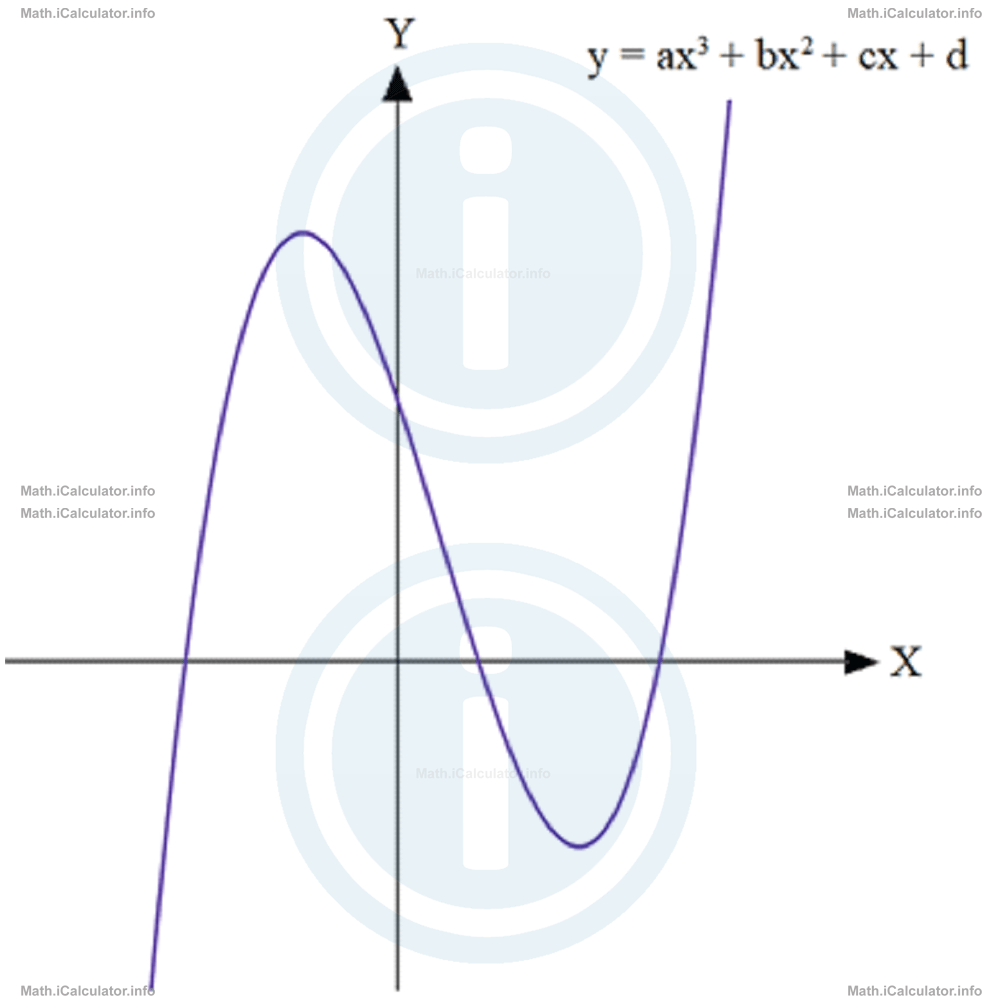
- The coefficient a is negative
- The graph has three wiggles
- The corresponding equation ax3 + by2 + cx + d = 0 has three different roots
- The constant d is negative
Correct Answer: C
2. . Which of the following statements is CORRECT for the cubic graph shown in the figure below?
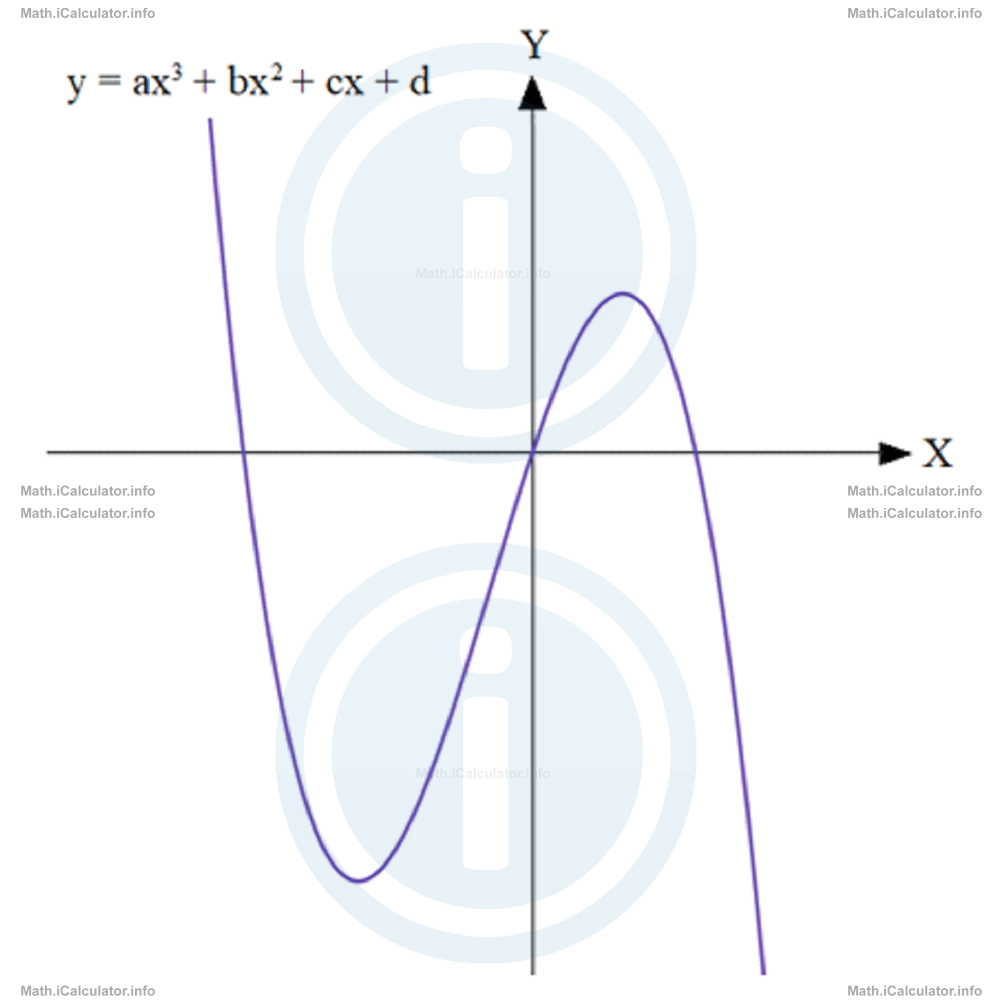
- The coefficient a is negative
- The graph has one wiggle
- The corresponding equation ax3 + by2 + cx + d = 0 has two different roots
- The constant d is negative
Correct Answer: A
3. . Which of the following statements is WRONG for the cubic graph shown in the figure below?
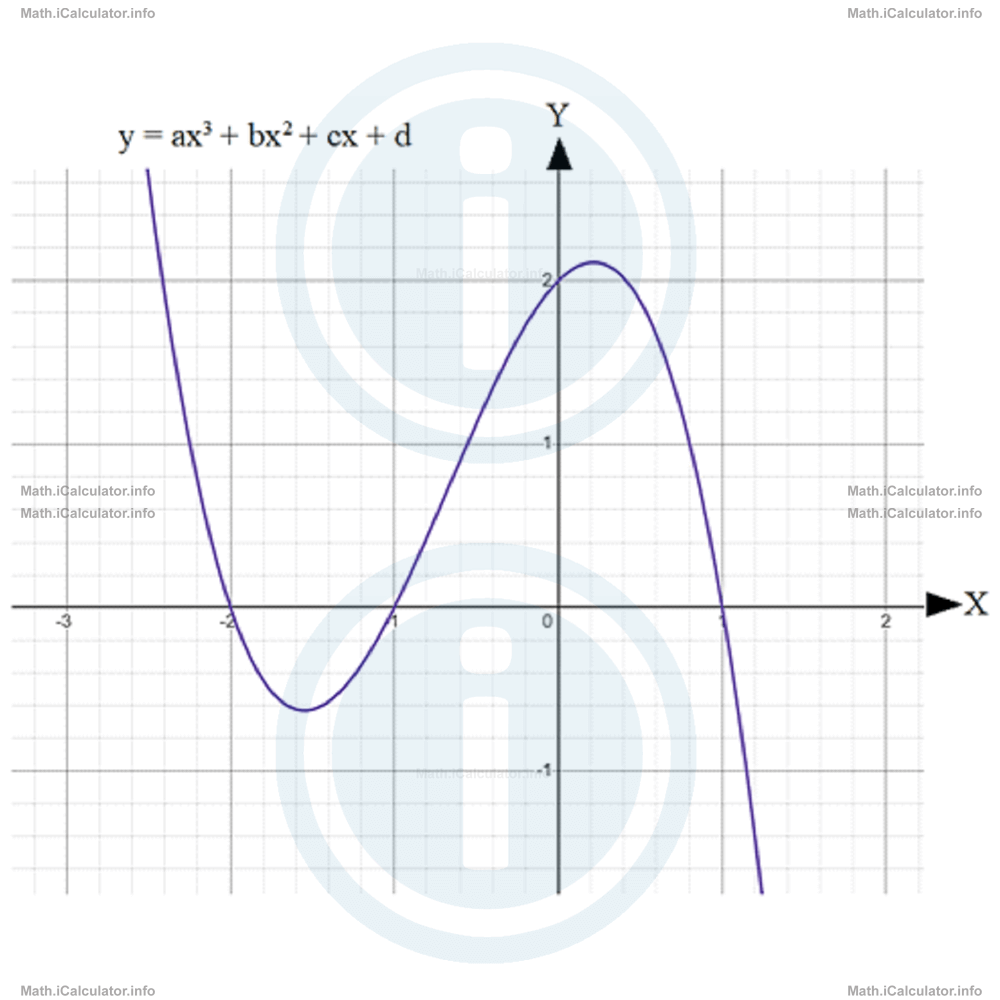
- The y-intercept of the graph is at (0, 2)
- The corresponding equation obtained for y = 0 has three roots
- The graph is a cubic one, as it has two wiggles
- The local maximum is 2 units away from the local minimum in the vertical direction
Correct Answer: D
4. . Which of the following statements is CORRECT for the cubic graph shown in the figure below?
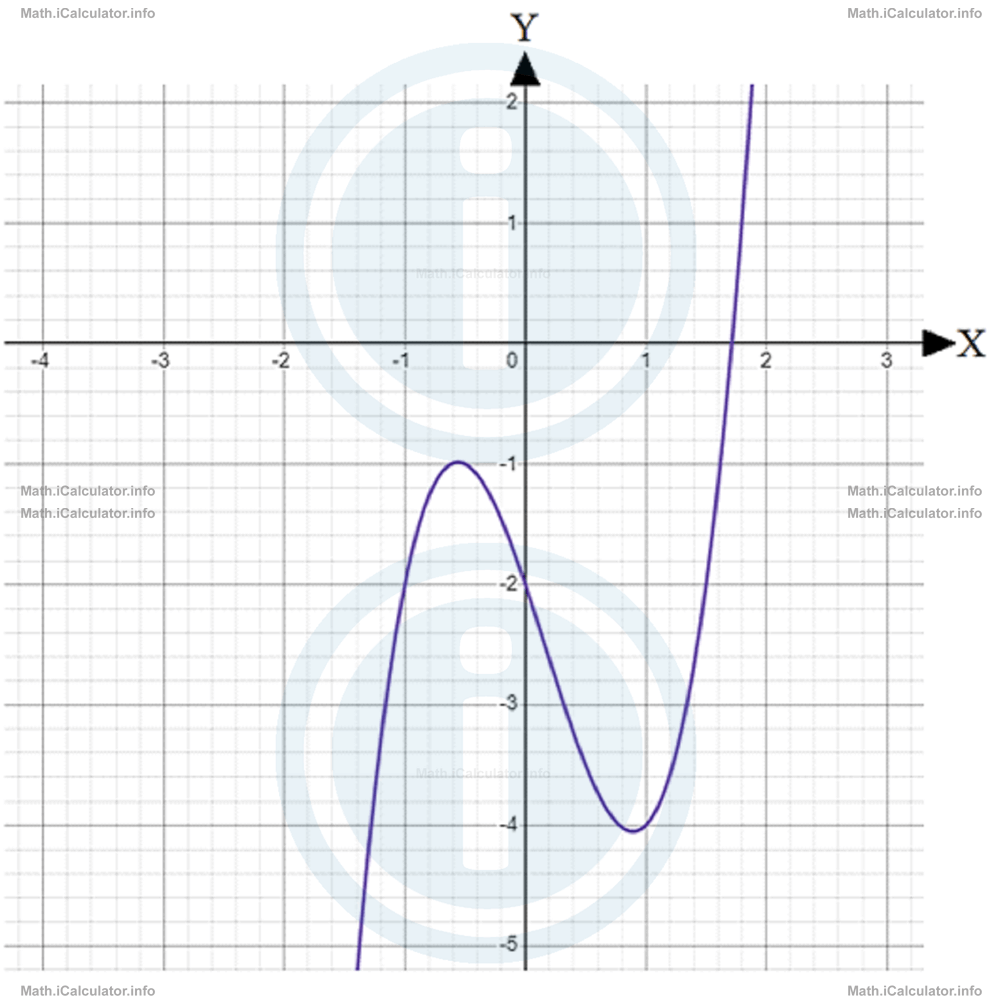
- The corresponding equation for y = 0 has three roots
- The graph has a single wiggle
- The y-intercept is at (0, 2)
- The local maximum is close to y = -1
Correct Answer: D
5. . How many x-intercepts does the graph of the cubic equation below have?
- 0
- 1
- 2
- 3
Correct Answer: C
6. . What are the coordinates of the y-intercept of the cubic graph
- (0, -6)
- (0, 6)
- (1, 0)
- (0, 0)
Correct Answer: A
7. . What is/are the x-intercept(s) of the equation
- -1, 0 and 1
- 0 and 1
- -1 and 0
- -1 and 1
Correct Answer: A
8. . Which of the following cubic graphs has both the coefficient a and the constant d negative?
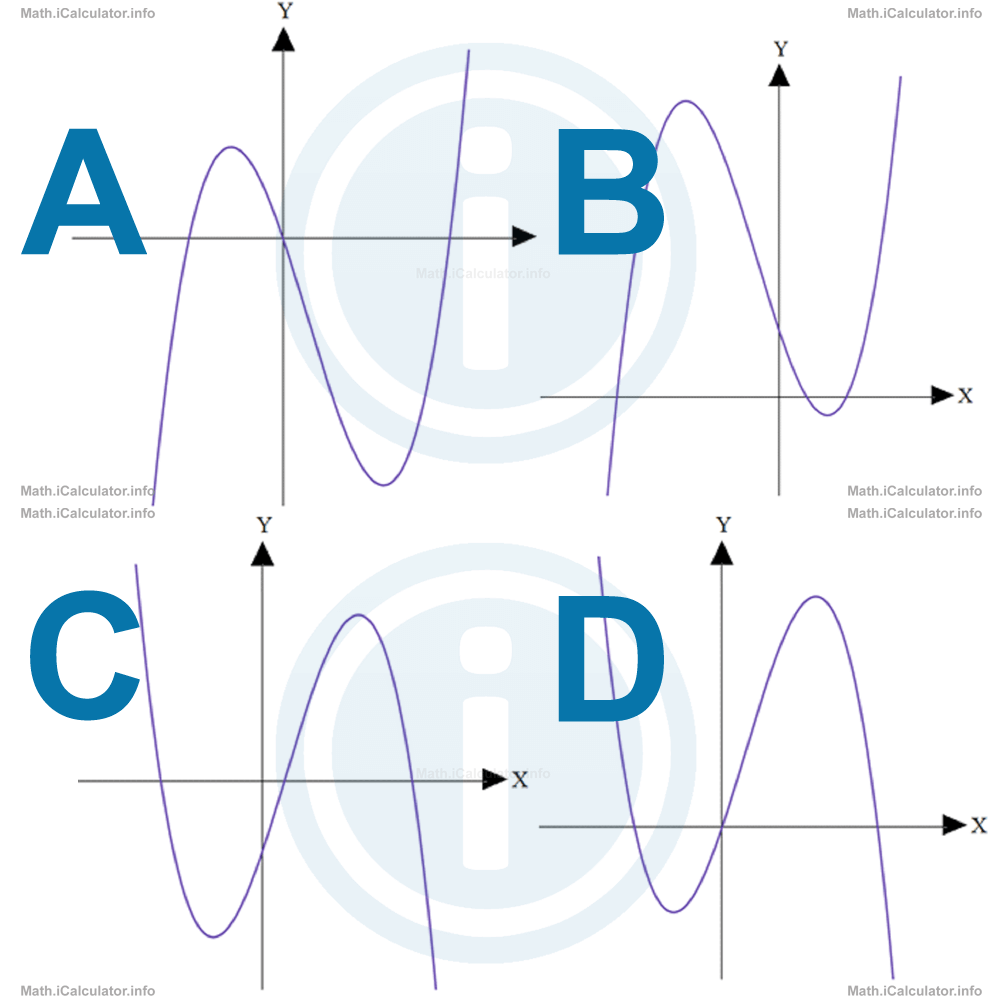
Correct Answer: C
9. . Where does the graph of the equation y = -x3 passes through? Recall the meaning of quadrants explained in the previous chapter and their position in the coordinates system: 1st quadrant = top-right; 2nd quadrant = top-left; 3rd quadrant = bottom-left; and 4th quadrant = bottom-right.
- In the 1st and 3rd quadrant
- In the 2nd and 4th quadrant
- In the 1st and 4th quadrant
- In the 2nd and 3rd quadrant
Correct Answer: B
10. . What is the difference between the biggest and the smallest x-intercept of the cubic graph obtained by the equation
- 4 units
- 5 units
- 6 units
- 7 units
Correct Answer: B
Whats next?
Enjoy the "Cubic Graphs" practice questions? People who liked the "Cubic Graphs" practice questions found the following resources useful:
- Practice Questions Feedback. Helps other - Leave a rating for this practice questions (see below)
- Types of Graphs Math tutorial: Cubic Graphs. Read the Cubic Graphs math tutorial and build your math knowledge of Types of Graphs
- Types of Graphs Revision Notes: Cubic Graphs. Print the notes so you can revise the key points covered in the math tutorial for Cubic Graphs
- Check your calculations for Types of Graphs questions with our excellent Types of Graphs calculators which contain full equations and calculations clearly displayed line by line. See the Types of Graphs Calculators by iCalculator™ below.
- Continuing learning types of graphs - read our next math tutorial: Reciprocal Graphs
Help others Learning Math just like you
Please provide a rating, it takes seconds and helps us to keep this resource free for all to use
We hope you found this Math tutorial "Cubic Graphs" useful. If you did it would be great if you could spare the time to rate this math tutorial (simply click on the number of stars that match your assessment of this math learning aide) and/or share on social media, this helps us identify popular tutorials and calculators and expand our free learning resources to support our users around the world have free access to expand their knowledge of math and other disciplines.